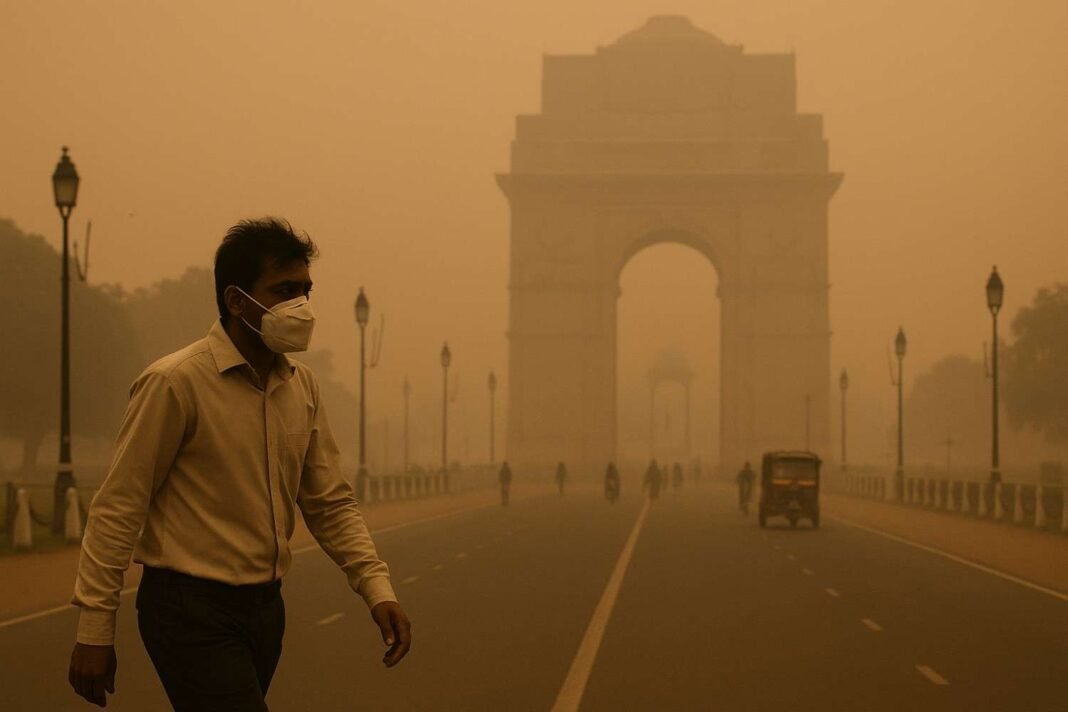Delhi Chokes After Diwali: Green Crackers Fail Miserably
New Delhi’s air turned toxic yet again this Diwali, with pollution levels soaring to their highest in five years despite restrictions and the much-touted “green” firecrackers. According to the Central Pollution Control Board (CPCB), fine particulate matter (PM2.5) concentrations surged to a staggering 488 micrograms per cubic metre within 24 hours after Diwali—more than three times the pre-festival level of 156.6 micrograms per cubic metre.
The CPCB’s analysis, covering data from 2021 to 2025, revealed a persistent spike in PM2.5 values during Diwali night and early the next morning. Despite repeated efforts by authorities to curb emissions, the capital’s air quality continues to deteriorate each festive season, plunging into the “severe” category.
Five-Year Trend Shows Worsening Pollution Pattern
The CPCB data paints a grim picture. Average PM2.5 levels during Diwali rose sharply from 163.1 to 454.5 in 2021, from 129.3 to 168 in 2022, from 92.9 to 319.7 in 2023, and from 204 to 220 in 2024. This year, the spike to 488 marked the steepest increase yet. The findings indicate that short-term gains from bans and awareness drives have not translated into long-term behavioral or environmental improvement.
A study by the research and advisory group Climate Trends attributed the pollution surge mainly to local firecracker emissions, stagnant wind speeds of less than one metre per second, and temperature inversion—a condition where cooler air near the ground traps pollutants close to the surface, preventing dispersion.
Experts Question ‘Green’ Crackers and Enforcement Gaps
Environmental scientists and experts have raised serious doubts about the efficacy and composition of so-called green crackers. Professor S. K. Dhaka from Rajdhani College, University of Delhi, said, “Even the supposedly eco-friendly crackers contributed significantly to particulate buildup. Their composition and quality need to be re-evaluated thoroughly.”
He added that the extremely low wind speeds during Diwali night left no room for pollutants to disperse, resulting in dense smog accumulation across Delhi and surrounding regions. Despite repeated advisories, fireworks continued through the night, exposing enforcement gaps and public indifference to health advisories.
Doctors Warn: Breathing Equals Smoking 10 Cigarettes a Day
Health experts have sounded an alarm, warning that breathing Delhi’s post-Diwali air is equivalent to smoking 10 cigarettes a day. Prolonged exposure to such high PM2.5 levels can cause or aggravate respiratory conditions like asthma, bronchitis, and chronic obstructive pulmonary disease (COPD), while significantly increasing the risk of cardiovascular issues.
Dr. Rakesh Kumar, a pulmonologist at AIIMS, noted, “The pollutants penetrate deep into the lungs and bloodstream, leading to long-term organ damage. The situation is especially dangerous for children, the elderly, and pregnant women.”
Climate Experts Call for Urgent Policy Overhaul
Aarti Khosla, founder and director of Climate Trends, said the recurring spike in pollution every Diwali highlights “a collective failure to learn from past mistakes.” She remarked, “It is disheartening that after years of witnessing the harmful effects of burning firecrackers, we still repeat the same mistake.”
Palak Balyan, research lead at Climate Trends, described this year’s Diwali as “one of the most polluted in recent memory.” The group’s analysis showed a threefold increase in PM2.5 levels from before to after the festival. “It’s clear that allowing firecrackers during this season is unsustainable for NCR’s already critical air quality,” Balyan said.
Unfavourable Weather and Local Factors Worsen Air
During the Diwali period, average temperatures in Delhi ranged between 19°C and 27°C, but a slight dip in temperature immediately after the festival coincided with the highest PM2.5 spikes. Meteorological experts said unfavourable weather, vehicular emissions, paddy-straw burning, and local industrial pollutants further compounded the crisis.
Despite court bans and the push for sustainable celebrations, Delhi’s post-Diwali smog remains an annual health emergency. Unless stricter enforcement, cleaner alternatives, and stronger public awareness campaigns are implemented, experts warn that the “festival of lights” will continue to cast a dark shadow over the capital’s air.








